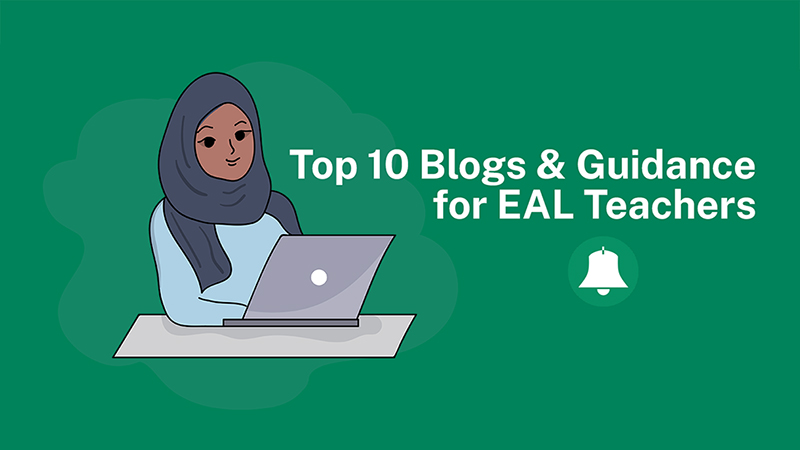Blog: Top 10 Blogs and Guidance for EAL Teachers This Summer
In this blog, we provide an overview of The Bell Foundation’s most popular EAL blogs and guidance to add to your 2023 summer reading list.

The summer is here, and for many of us, that means an opportunity to catch up on our reading.
Because we know you’re passionate and may include work-related reads despite being on holiday, we have curated a handy summary of some of our most popular blogs, articles, and guidance from this school year.
Expect to find evidence-based advice and insights on some of the key topics for schools, including how to work effectively with EAL speakers and their families, welcoming pupils from refugee backgrounds, and supporting teachers at the start of their careers.
For the latest information on the Foundation’s new publications, sign up to our mailing list.
1. Blog: How can teachers help EAL students build vocabulary?
In this blog, Sheila Hopkins, trainer at the Foundation, explores how teachers can identify key vocabulary in lesson planning and provides the best ways to teach these key words to EAL students, drawing on the latest research.
2. Blog: How to support Afghan refugee children in schools
Part of a series of events and publications, in this blog Glynis Lloyd provides guidance and practical strategies for teachers on how to support Afghan refugee children in schools.
3. Blog: EAL assessment - why it is important and how to assess EAL learners - The Bell Foundation
Drawing on the wealth of evidence published by the Foundation, this blog explores the importance of assessing the language proficiency of EAL learners and provides expert advice on how to do this effectively.
4. Guidance: Working with parents to support the learning of pupils who use EAL
Parents have a central role to play in their children’s education, and yet mums and dads of EAL pupils often experience barriers when engaging with schools. In this guidance, we provide recommendations for practitioners on working with parents of EAL pupils and how to ensure they are equipped to support their child’s learning.
5. Guidance: Integrating Students using EAL into Mainstream Lessons
In this guidance, we provide an overview of the social, academic, and linguistic benefits of integrating students who use EAL into mainstream lessons. We also explore some of the key considerations for schools when implementing out-of-class interventions.
6. Guidance: Recommendations for sustainable provision in schools, for children who are refugees
Launched earlier this year, this guidance is aimed at schools which are new to welcoming learners who are refugees. It provides recommendation for schools on how to create environments in which refugees feel safe, that they belong, and have opportunities to succeed academically and beyond.
7. Blog: How to support trainee teachers to teach EAL pupils
Following the launch of the Foundation’s third initial teacher training (ITT) module, in this blog Sheila Hopkins explores how ITT programmes can prepare student teachers to work in linguistically and culturally diverse classrooms.
8. Blog: Working with parents to support the learning of EAL pupils
In this blog, Katherine Solomon, our Head of Training and Resources, outlines the practical steps that schools can take to ensure EAL families are able to support the learning of their children at home.
9. Guidance: Creating a learner profile for plurilingual learners who use EAL
Learners using EAL are an extremely diverse group, and to work effectively with EAL pupils, it is vital to understand their individual backgrounds, strengths and learning needs. In this guide, we provide advice on how to create learner profiles that will lead to improved learning environments, well-being, and academic success for multilingual learners.
10. Guidance: Guiding Learners Using EAL Through the School Transition Process
Launched in June, this new guidance provides evidence-based ideas and strategies for guiding learners using EAL through the transition from Year 6 to Year 7, providing additional insights with real examples from schools.